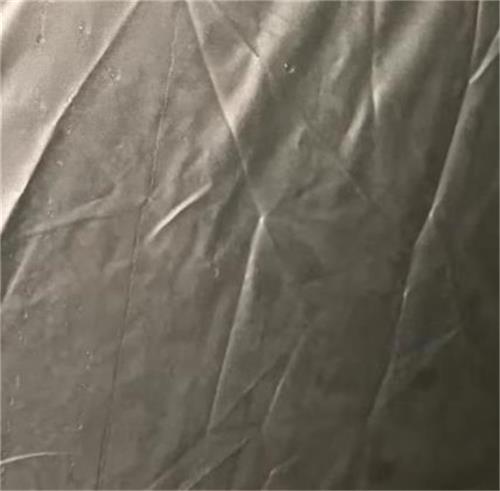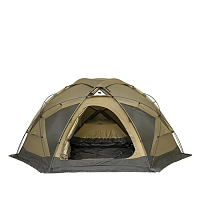How does condensation occur?
Condensation is a common issue in tent camping. Condensation simply means that hot gas will form liquid droplets on the surface of cold objects.
Do all tent fabrics condense?
Most fabrics on the market will condense. The reason is simple. Hot gas condenses when it meets cold objects. This is a physical phenomenon, not determined by the cloth. When you buy a tent, the seller says that the tent will never condense, then the product must have a scientific explanation, or maybe they are just cheating you.
For cloth with very rough surface, such as canvas and cotton, condensate is not likely to form to some extent, so when you see it and you will find that there seems to be no condensation. But you will definitely find that the cloth of the canvas tent becomes wet. In fact, this is caused by condensation. The only difference is that the water droplets do not drip. Why don't the condensation of canvas tents and cotton tents drip? Because these water droplets are absorbed by canvas and cotton cloth which with very good water absorption before they are fully formed, so we can only see wet cloth without water dripping.
Some other technical fabrics may also have the same phenomena that there seem to be no condensation. For example, some clothes are made of synthetic cloth. Its inner layer is made of hygroscopic fabric and its outer layer is made of evaporating fabric. As long as the proportion of hygroscopic and evaporating is well controlled, the whole cloth can look as if it is not wet.
Here I want to focus on one kind fabric, Oxford cloth. Oxford cloth is a kind of high-density cloth. If the Oxford cloth produced with silver coated layer, the surface of the cloth is very prone to condensation. But please don't worry. Use large tents as much as possible and use inner mesh tents, which can improve your camping experience.

How to prevent condensation inside the tent
Since condensation inside the tent is a physical phenomenon, we can also use some physical ways to reduce it. The following methods are commonly used:
1. Increase the air circulation inside the tent. On the one hand, it can disperse the hot air out of the tent. On the other hand, it can accelerate the evaporation of the unformed condensate on the tent cloth.
2. Choose tents made of canvas or cotton cloth. Due to the rough surface of canvas and cotton cloth, and due to their good moisture absorption capacity, they can reduce condensation.
3. Use some anti condensation coating. This is mainly based on the moisture absorption principle of some chemical components.
4. From the point of view of physical principle, try to ensure that the temperature difference inside and outside the tent is as small as possible. For example, reduce the exhalation of heat, reduce the number of people sleeping in the tent, choose warm weather camping, etc.
Some tents have only frost layers, but some have fast dripping water. What's the matter?
This is because of the temperature difference. If the temperature difference is small, there will only be a thin layer of water mist on the tent cloth. For example, when you single sleep in a 4-6 people tent in early autumn, there will be a layer of water mist on the tent cloth, because the temperature difference is not very large. If there are many people sleeping in a small tent, and it is at night or in winter, water droplets will quickly appear inside the tent walls.
How to judge whether the water droplets inside the tent are condensation or cloth leakage?
We can verify whether the tent cloth leaks in two ways.
1. We can test through a piece of absorbent paper towel. First find the position where you think the water drops fast, then press the absorbent paper towel to the upper part of this position. This step is to prevent the water above from converging to the observed position and resulting in the drop of water. If the water flow above is blocked and the water leakage at this single point does not decrease, the probability is that the tent cloth leaks. On the contrary, if the water leakage at the point you observe decreases after blocking the above water flow, it indicates that the temperature inside the tent is too high, resulting in the formation of condensate and water dripping.
2. After camping, mark the position where you think it is leaking. Then when you go home, place the cloth horizontally and pour some water on it. If there is water leakage under the tent, it means that the tent cloth is leaking. If there is no water leakage under the tent, the tent cloth is watertight.
Please be careful not to use cold water for this test. Because the cold water contacts the cloth at normal temperature, it may lead to the formation of condensed water, resulting in water droplets. Please don't draw the wrong conclusion by some uncontrolled aspects.









